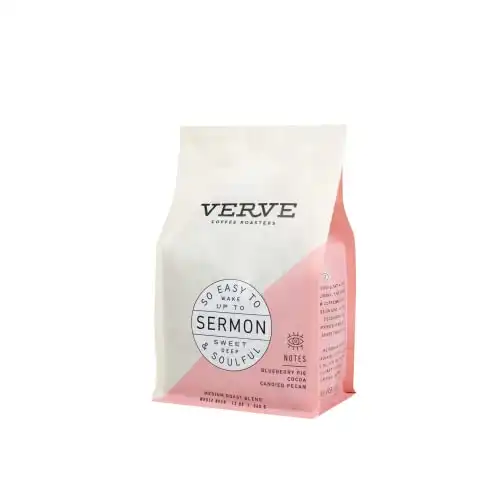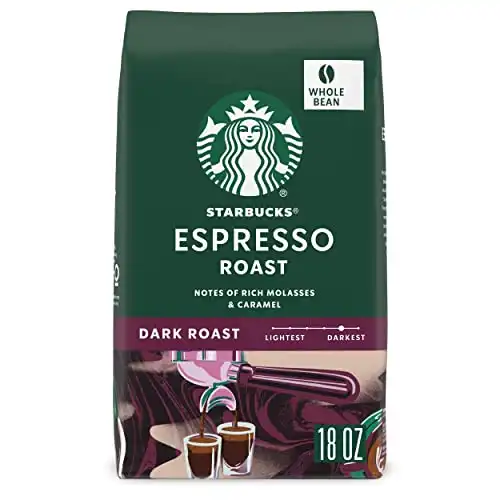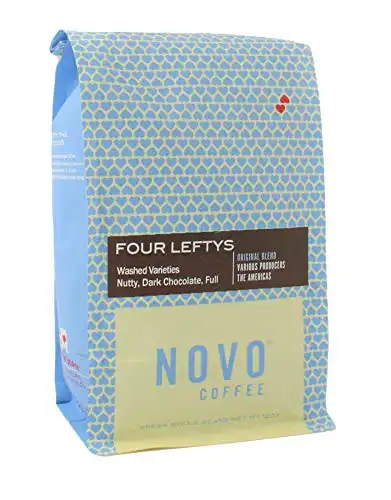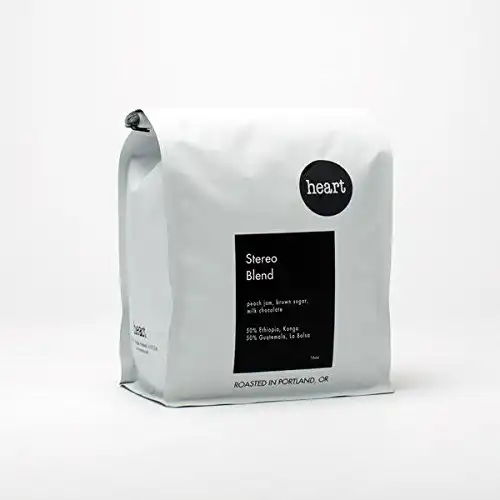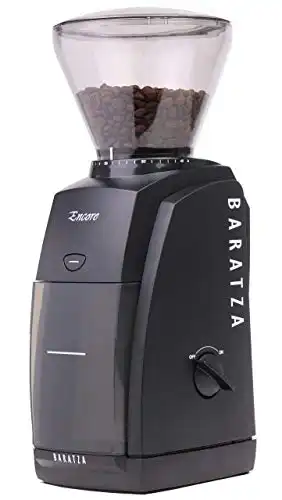Are you a coffee drinker who wants to start making your own espresso coffee drinks at home? Or are you a regular latte drinker who wants to make a better latte?
You’re in luck. Today we’re going to walk through just how to pick the right coffee beans to use in your latte!
A latte is a single or double shot of espresso and steamed milk. It also has a layer of foam on top where you’ll often find latte art.
To make one you’ll need an espresso machine and milk frother or steam wand. Some say a moka pot or Aeropress will do to make espresso but to make a real, true latte you really need a an espresso machine to pull a shot of espresso.
The quality, roast level, and flavor of your espresso beans can make or break a latte.
For years, coffee roasters and baristas at your local coffee shops preferred dark roast coffee for espresso because the flavor stood out even with milk and sugar added to the drink.
While there is still a place for dark roast coffee in the world of lattes, lighter roasts and blends make for an excellent choice as well.
If baristas can experiment with added latte flavors like lavender and ube, it seems only fair to experiment with new coffees as well.
In this article, we’ll cover four kinds of coffee that go great with a latte. Whether you’re a dark roast die-hard or you’re looking to try something new, I’ve got you covered.
Best Coffee for Lattes
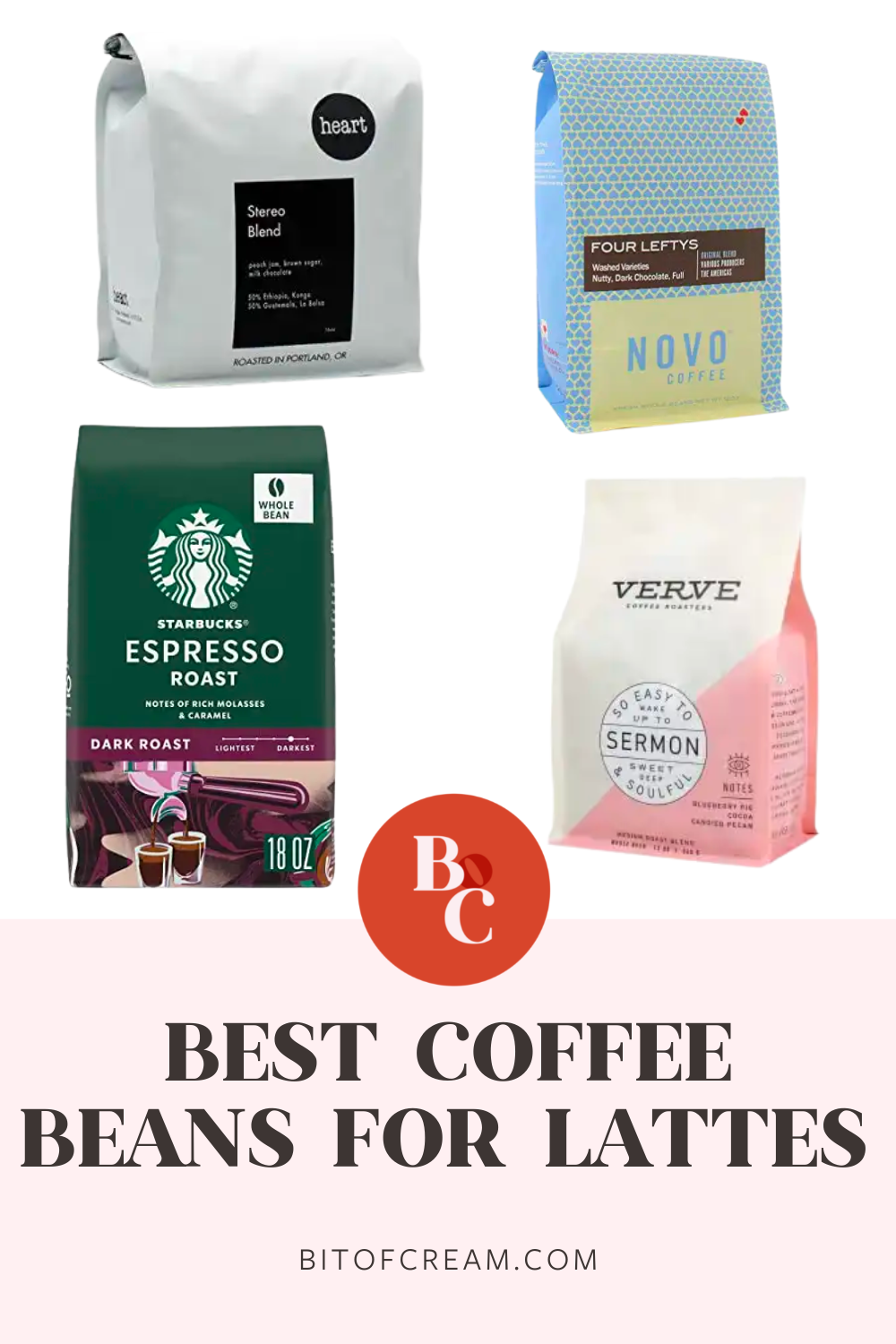
This post includes affiliate links.
| Product Image | Product Name | Primary Button |
|---|---|---|
Best Coffee Beans for Lattes: Our Top Picks
1. Best Beans for Sweet Coffee Lovers: Verve – Sermon Blend
The Sermon Blend from Verve Coffee is all about sweetness. It’s a versatile medium roast coffee with notes of blueberry pie, cocoa, and candied pecan.
The sweetness comes from its seasonal blend of East African and Colombian coffees. It’s a combination of washed and naturally processed coffees, so you have a clean-tasting cup that allows the fruit notes to shine through.
Any coffee with this much natural sweetness is an A-plus in my book. The sweetness on this coffee is so good that you might not want to add anything extra.
Verve offers a lot of great tips on how to get the most out of their coffee on their website. Their resources include a recipe for Sermon on espresso, french press, and Aeropress, so you can play with this coffee beyond your morning caffe latte.
2. Coffee Bar Staple: Starbucks – Espresso Roast
Unlike the other espressos on this list that aim to balance body and acidity, the Starbucks Espresso Roast is a blend for the dark-roast lover in us all.
It’s bitter! But I’m not here to shame if that’s your thing.
Let’s be real, all Starbucks coffee is dark-roasted, regardless of what it says on the bag.
For me, dark roast is the flavor of camping and road trips. Why would I bring delicate light roasts on my dirtbag journey when I need something super strong after a night of poor sleep?
It has a bitter taste. It’s diner-style. The Espresso Roast is super dark to punch through all that milk and sugar and bring you toasted, dark chocolate deliciousness in a cup.
If you like to sweeten your latte, the baking cocoa notes of the Espresso Roast will balance out the sweetness.
3. True Medium Roast: Novo Coffee – Four Leftys
- Medium roast
- Nutty, dark chocolate
- Washed varieties
Remember when almost every bag of coffee said it tasted like “roasted almond” or “hazelnut?”
Novo Coffee’s Four Lefty has the toasted, nutty flavor of a classic medium roast. It’s lighter than the Espresso Roast but a touch darker than the Sermon.
Four Leftys is a washed-process blend that easily translates to espresso shots and lattes.
It’s possible to see different results from one bag of Four Lefty’s to the next. This is because they source coffee from a large region, presumably depending on price and season. So you might have an experience with the blend one month that doesn’t match up the next.
Because they use washed coffees, the flavor is less fruit-forward. Whether you prefer your lattes plain or sweetened, Four Leftys is a reliable crowd-pleaser.
4. For Fruit Forward Fans: Heart Roasters – Stereo Blend
Stereo has the perfect blend of rich sweet, and citrus I always look for in an espresso blend. It’s also the most fruit-forward coffee on this list. This coffee is going to have more complex acidity than the Four Lefty’s because of its roast level and origins.
If you prefer espresso with some fruit or even floral notes – look for a coffee (like this) that uses African beans as part of the blend.
The Stereo blend rotates its origins seasonally and is made up of 50% Ethiopian coffee and 50% Colombian. It’s a delicate balance that highlights soft citrus notes like tangerine, with the sweetness of honey and the richness of dark chocolate.
The Stereo blend would also be great brewed with an Aeropress for a more concentrated brew, or even better – in a cappuccino.
What To Look For
Roast Level
Roast level refers to how light or dark coffee is roasted. During roasting, as a coffee bean gets hotter it gets darker.
Roasting is an art form. The best roasters are always looking to highlight the strengths (the yummy flavors) of the coffee they’re using.
This means knowing what to expect from the coffee-growing region the beans are from. And being willing to experiment with roast levels to get the coffee to be the best it can be.

Light-roasted beans are often used in specialty coffee. This is common for pour-overs and single-origin coffees.
A lot of coffee, especially espresso, is medium-roasted.
A medium roast is typically associated with mellow acidity, low or non-existent fruit notes, nuttiness, and chocolate. Medium roast is versatile and works well for a number of brew methods. We recommend medium roast for a cold brew coffee.
Dark roast is typically associated with deep, dark chocolate flavors, drip coffee, and french press.
In the specialty coffee world, roasters and baristas tend to shy away from darker roast coffees. The process of roasting beans so dark often reduces the complexity of flavor in a particular coffee.
This is why many coffee bag labels now showcase the growing region. Sometimes even the specific farm. In this way, the roaster is able to highlight the particular flavors of a coffee’s origin.
Roast Date
Contrary to popular belief, same-day roast dates are not ideal for same-day brewing.
Always make sure the roast date of your beans is at least a few days old. You can usually find the roast date printed on the bottom or back of the bag.
Coffee will taste better after it has had a few days, or even a full week, to oxidize. This is why many coffee bags you see in the supermarket have one-way valves so the beans can off-gas properly.
After the roasting process, the beans are still releasing CO2, which can have a negative effect on extraction. If the coffee is a month old or more, there is a chance the beans will be stale, and it won’t be nearly as flavorful.
It’s not unreasonable to buy beans that are a couple of weeks old, depending on how long it will take you to go through the bag. If you know it takes you a week to go through a bag, then you can use that time frame to measure whether a coffee is too fresh or too old.
I tend to avoid bags of coffee that are vacuum sealed. This means that the company is trying to maintain freshness over a longer period than they probably should for perfect flavor.
Pre-Ground vs. Whole Bean Coffee
The major drawback of whole-bean coffee is that you have to have your own grinder. On the other hand, pre-ground tends to lose flavor much faster than whole bean.
Whole-bean coffee will always yield a more flavorful cup of coffee than pre-ground. As soon as you grind any coffee, it instantly starts oxidizing.
This is why baristas grind every shot of espresso they pull as each drink order comes through. This way, you get the best level of extraction possible.
It can be costly to buy a good quality coffee grinder, but if you’re going to be making your own lattes at home you might as well go all in.
Some entry-level espresso machines include grinders if you have limited counter space. And there are plenty of manual grinders to choose from as well.
For an entry-level coffee grinder, I’d recommend the Baratza Encore. We used this one for about 10 years before recently upgrading!
It’s affordable, simple to use, and has a wide range of settings from espresso to french press.
Origin
Origin refers to the place where the coffee was grown.
Single-origin means all the coffee in a given bag of beans comes from one source. A “blend” means there is a variety of coffee from different places, regions, or farms.
Single-origin coffees highlight the particular flavors of a given region. For example, coffees sourced from Ethiopia are more fruit-forward. A Colombian coffee might be nuttier with honey or caramel flavor notes.
Single origin is best if you plan to drink Americanos without cream, or espresso alone.
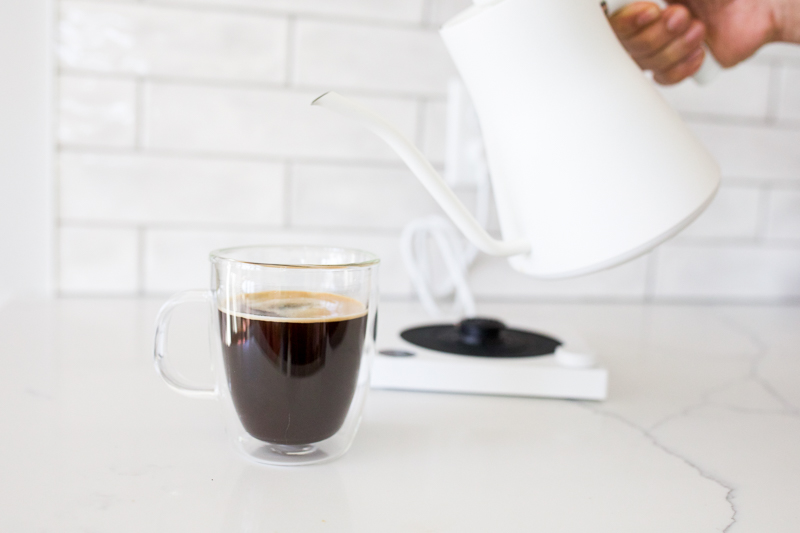
These coffees are often light-roasted to highlight their unique flavor profile. Sometimes baristas offer single-origin coffee for espresso only. Sometimes the acidity of a coffee might clash with milk.
When you’re making espresso for lattes, it’s always a safe bet to opt for blends over single-origin. Roasters craft specific blends with coffee from different regions so that the espresso will complement the milk.
Process
After a coffee cherry is harvested, there are a few different ways of removing the cherry fruit from the pit or bean inside. Washed and natural are the two main categories for coffee processing. Different processes result in different flavors.
“Washed process” means the cherry fruit is washed off of the bean before it is left to dry out. This often leads to coffee with a crisper, cleaner finish, and possibly more acidity.
A natural process coffee means that the coffee cherry dries out with the cherry fruit still on the bean. This process allows organic compounds from the fruit to impact the bean, which results in a more fruit-forward coffee with a full body.
Acidity
Acidity is not your enemy. Poor extraction is.
I can’t count how many times someone has asked me for “the least acidic” coffee on the shelf. As if acidity was lurking in the coffee, waiting to ruin their perfect cup.
I understand that some people might want low acidity for health reasons. But I don’t think that’s every person that asks, because all coffee is technically acidic.
Unfortunately, when coffee is over (or under) extracted, it can produce unpleasant flavors. Most folks associate these flavors with acidity. This is not the fault of the coffee.
When you’re working with coffee, acidity is something to value.
Acids provide flavor balance and character. Acidity isn’t the same as “sour” or “burnt.” A healthy level of acidity translates to brightness in flavor. Think of peaches or apples. Without their acidity, they wouldn’t taste so good.
The takeaway here is that all coffee contains acid. Acidity in flavor is not a bad thing. If you need to avoid acids, but still want to drink coffee, always ask for the darkest roast. The longer roasting process can reduce some of the natural acid levels present in coffee.
Price
When it comes to coffee, the higher the quality, the pricier the beans. Though it depends on factors like where you live and where you shop.
In my home state, I’d expect to pay no less than $16 for a 12-ounce bag of quality, whole-bean coffee. High-quality beans in small batches will always be the most expensive but also typically the best flavor!
I tend to buy my coffee directly from the cafes that serve that roaster’s coffee, if not the actual roaster.
I would say $14-16 is mid-range, with high-end single-origin coffees in the $18-22 range.
FAQs
No. You only need the coffee that you enjoy for a latte. But the things you can look out for are roast level and whether the roaster intended that coffee for espresso.
I always look for something that balances chocolate and fruit notes, because those are my two favorite flavors in coffee, no matter how I brew it.
Where have you had your most memorable latte experience? Visit or call the cafe and ask them what coffee they use for their espresso.
If you’re not sure where you’ve had the best latte, look for espresso blends at the store with flavor profiles that speak to you.
Close, but no cigar.
It may sound harsh, but I don’t think you can make a latte without espresso. A latte only has two ingredients: steamed milk and espresso. If you don’t have one of these ingredients, you’re missing something essential.
One home recipe alternative is the cafe misto, made with steamed milk and drip coffee. But it won’t have the same flavor or mouthfeel as a latte.
The right coffee beans will result in a great latte! We hope you have a better idea of what coffee beans to buy for your next at home latte.
And if you’re looking for the best coffee beans on Amazon, check out our top 5 picks!.
Want to learn about the different between a latte and different type of coffee drinks? Check out one of these!
Want weekly coffee tips and tricks, recipes and more?
Put your email in the box below and you’ll not only get added to our list but you’ll also get 3 free recipe cards (Colada Coffee, Mocha and Spanish Latte) delivered right to your inbox!

